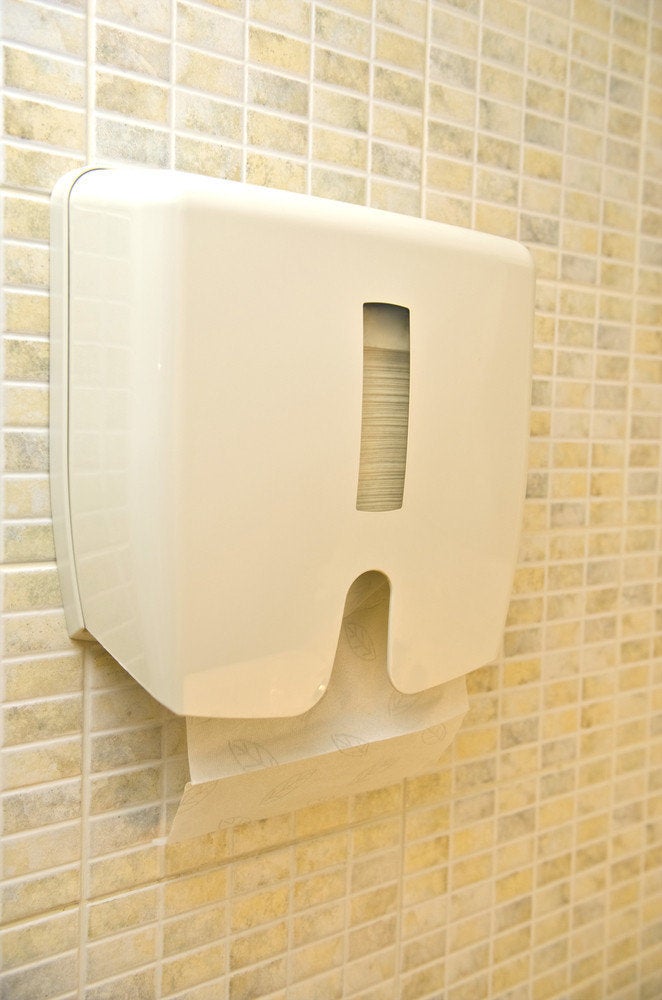
Is the New York Giants' bathroom more sanitary than your hospital room? Could be. And that player cleanliness may even have helped send the team to the Super Bowl.
Freakonomics co-author and self-confessed germophobe Stephen Dubner, working on a Football Freakonomics segment for the National Football League, noticed that every urinal in the football Giants' bathroom had a plastic pump bottle of hand sanitizer perched on top -- a phenomenon he promptly documented photographically.
Health care-associated infections cause more than 98,000 patient deaths every year. Yet as I've noted previously, the guy who just used the toilet at the train station is way more likely to have clean hands than the guy walking up to your bed -- or into the operating room -- at the local hospital. That's based on my comparing hospital sanitation with the results of a surreptitious survey by researchers from Harris Interactive of more than 6,000 adults using restrooms at six high-volume sites across the country.
At New York City's Grand Central Station and Penn Station, only 80 percent of men and women washed up. However, even Atlanta's Turner Field, where just 65 percent of men washed their hands, looked positively sterile compared to hospitals. The Centers for Disease Control and Prevention found that baseline compliance for hand hygiene was just 26 percent in intensive care units and 36 percent in non-ICUs.
This past November, suburban New York's North Shore University Hospital reported it had raised the hand hygiene rate in its medical ICU from a truly dismal 6.5 percent to more than 80 percent by using a video monitoring system originally developed to ensure hygienic practices at meatpacking plants. Adam Aaronson, founder of Arrowsight, the company that made the system, expanded into health care after his mother and sister were both victims of serious infections while hospitalized.
Noted a New York Times blog:
What makes the system function is not the videotaping alone -- it's the feedback. The nurse manager gets an e-mail message three hours into the shift with detailed information about hand hygiene rates, and again at the end.
There are also electronic signs that "are a constant presence in both the surgical and medical ICUs," providing feedback to doctors and nurses what the handwashing rate was for that shift and setting up a "positive competition" between teams.
On a similar psychological theme, behavioral psychologists at the University of Pennsylvania posted different signs next to a hospital's soap and hand-sanitizing gel dispensers to see what wording would have the greatest impact. As journalist Wray Herbert relates, one sign read: "Hand hygiene prevents you from catching diseases." Another read: "Hand hygiene prevents patients from catching diseases."
The third, a control sign, read: "Gel in, wash out."
After two weeks, doctors and nurses used significantly more soap and gel when the signs emphasized patient consequences, but not when the signs emphasized personal risk and benefit. Writes Herbert: "This would suggest that although doctors and nurses may believe that they themselves are invulnerable, they don't make the same assumption about their patients."
Kind of like the thinking behind those "Loose lips sink ships" admonitions to soldiers and civilians during World War II.
For Dubner, it's clear that a strategy of simply "educating" doctors about better sanitation has failed, as he laid out in a Freakonomics podcast called, "What Do Hand-Washing and Financial Illiteracy Have in Common?"
And while there appear to be no video cameras trained on the Giants' urinals -- or at least none noticed by Dubner -- the players did have a professional motivation to make liberal use of the germ-fighting gel. That's because "washed up" players may have been a factor in helping catapult the Giants to the Super Bowl in the first place.
When hand sanitizers were placed in dorms at the University of Colorado, a study on infection control found that overall illness rate dropped by 20 percent and missed school days by 43 percent. Presumably, trying to keep healthy bodies on the field was why Giants management gave the hand sanitizers such a prominent position.
A version of this post was previously published on Forbes.com.